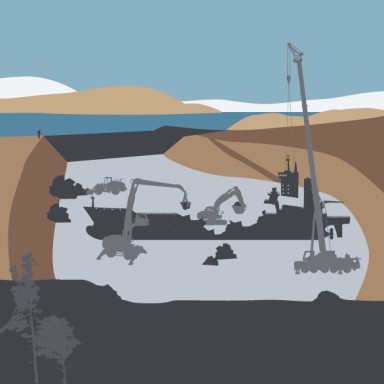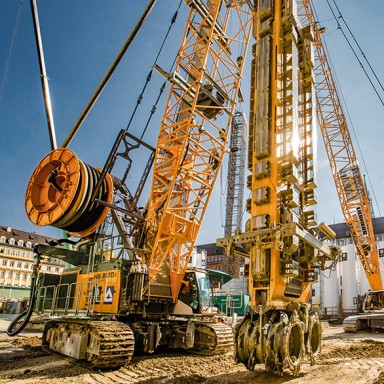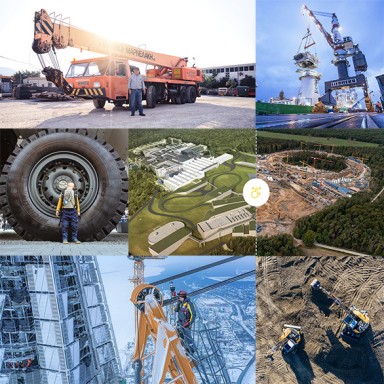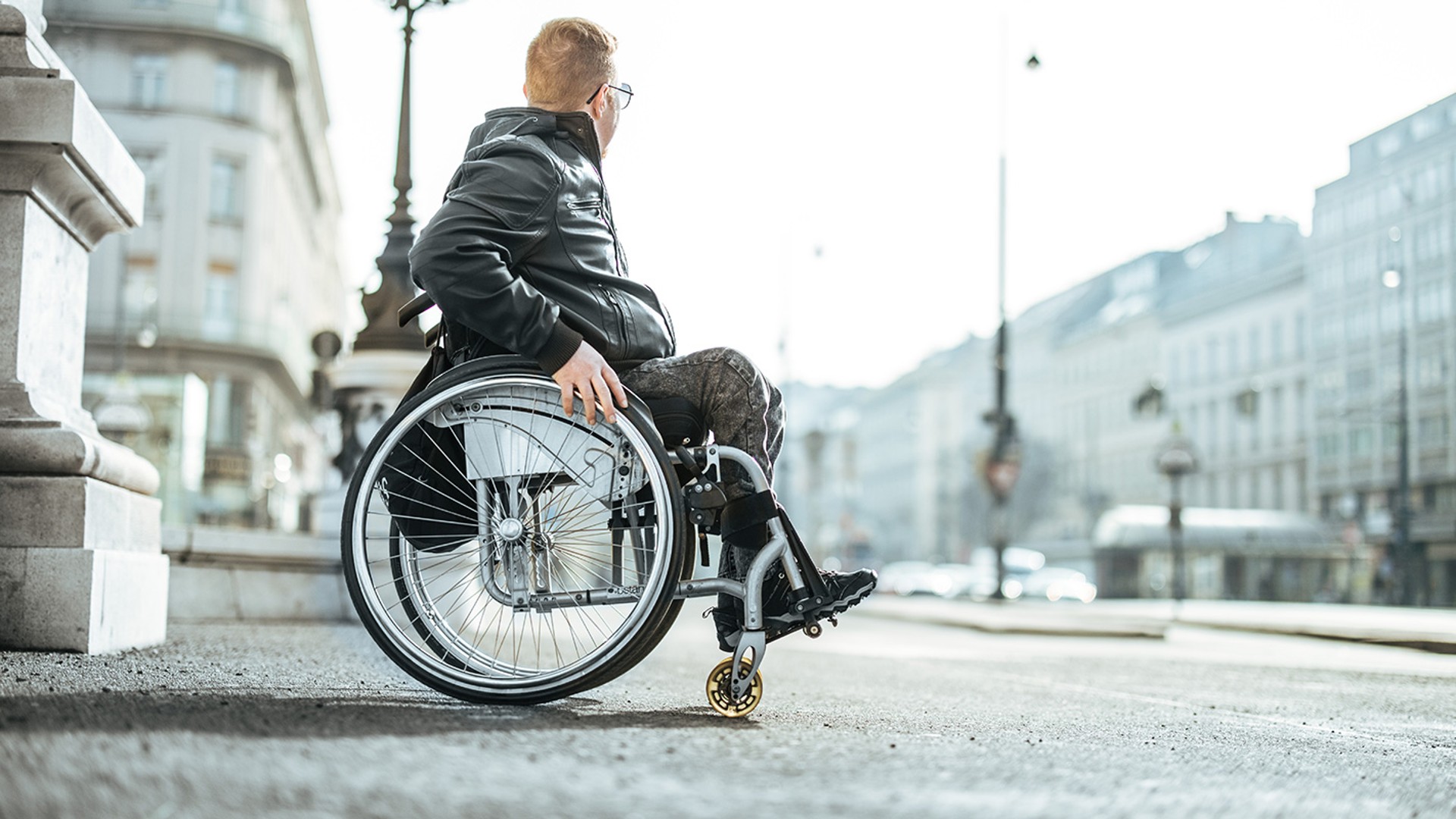
9 minutes reading time
On the move - without barriers
Freedom from barriers makes life easier for us all. Electrohydraulic actuators from Liebherr elevate railway vehicles to a whole new level of comfort and safety. These technologies benefit passengers of all abilities, allowing them to easily board and exit trains, for example.
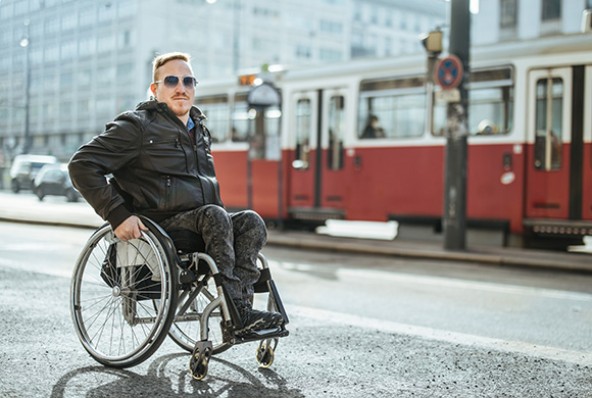
Rolling along through life
It doesn’t happen too often. But this is one situation in which Patrick Berger prefers to take the lift. Taking the legendary staircase leading up to the Albertina, the famous art museum in Vienna’s First District, is simply not an option. Since the age of 11, Patrick Berger has had to use a wheelchair due to the effects of myelitis. This means that large staircases with many narrow steps are no use to him.
However, Patrick doesn’t think in terms of limitations and barriers. Instead, he sees a world of possibilities and is continually looking for new areas of fun and adventure to explore. At an early age, he topped the rankings in various sports, such as table tennis, rugby, swimming, cross-country skiing, biathlon and alpine skiing, where he competed in both the European and World Championships. He even competed for the world title in ballroom dancing. That was until the curvature of his spine caused him to give up competitive sports. He then went on to study business economics, and now enjoys spending his free time in the great outdoors on the hiking trails in the alpine countryside near his home region, Salzburger Land (Austria).
We’re all in the same boat when it comes to accessibility.
Obstacles? Who needs them?
Patrick is always up for an adventure. That’s why barrier-free accessibility is such an important topic for him in his everyday life. He knows that not every person with a disability is able to manoeuvre over obstacles (what’s more, he knows from experience that some obstacles can cause serious damage to wheelchairs). “We live in a mobile society. By getting rid of barriers, we make sure that everyone can take part,” says Patrick.
And to achieve this, barrier-free access to transportation is an absolute necessity. “It’s not just about people with disabilities. It’s also about making life easier for people who use pushchairs or walking aids, or who have to pull heavy suitcases. We’re all in the same boat when it comes to accessibility,” Patrick emphasises. “It’s time we start seeing things that way when we talk about new regulations and investment.”
By clicking on “ACCEPT”, you consent to the data transmission to Google for this video pursuant to Art. 6 para. 1 point a GDPR. If you do not want to consent to each YouTube video individually in the future and want to be able to load them without this blocker, you can also select “Always accept YouTube videos” and thus also consent to the respectively associated data transmissions to Google for all other YouTube videos that you will access on our website in the future.
You can withdraw given consents at any time with effect for the future and thus prevent the further transmission of your data by deselecting the respective service under “Miscellaneous services (optional)” in the settings (later also accessible via the “Privacy Settings” in the footer of our website).
For further information, please refer to our Data Protection Declaration and the Google Privacy Policy.*Google Ireland Limited, Gordon House, Barrow Street, Dublin 4, Ireland; parent company: Google LLC, 1600 Amphitheatre Parkway, Mountain View, CA 94043, USA** Note: The data transfer to the USA associated with the data transmission to Google takes place on the basis of the European Commission’s adequacy decision of 10 July 2023 (EU-U.S. Data Privacy Framework).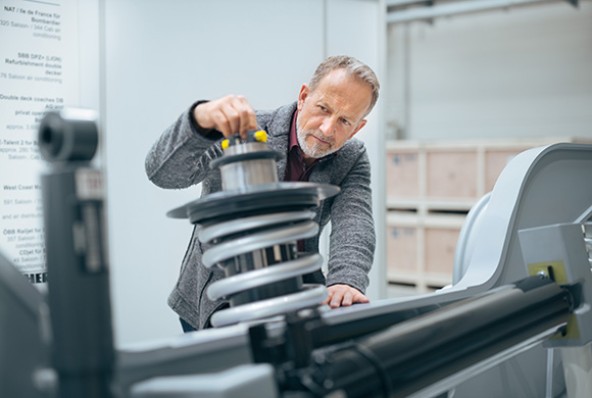
High-tech, high-comfort rail travel
Just 25 kilometres from Vienna’s Albertina Square, the team at Liebherr-Transportation Systems GmbH & Co KG in Korneuburg (Austria) are working to develop technical solutions that enable people to board and exit trains without barriers. Paul Hofbauer is an industrial engineer specializing in mechanical engineering and heads product management in the field of hydraulic systems. “Hydraulic leveling systems are an important focal point due to boarding and exiting trains without barriers,” explains Paul. “Our hydraulics programme ranges from complete leveling systems to passive undercarriage control systems, and all the way to electrohydraulic actuators for tilting technologies used in railway vehicles. All the hydraulic features ensure a more comfortable ride, even at high speeds, which can also significantly reduce travel times for passengers.”
Leveling systems have long been in use in North America. The Americans with Disabilities Act (ADA) lays the legal groundwork. This law requires that the height difference between a train and the platform should be no greater than 16 millimetres during boarding and exiting. “Our sensor-controlled electrohydraulics enable us to raise or lower a train at the platform by as much as 80 millimetres. Train operators in places like Chicago, Toronto, Houston, Boston and Kansas are already using our leveling systems with excellent results,” says Paul. These technologies can also benefit operators in Europe.

All aboard! Barrier-free rail travel in Europe
Successful testing has already been carried out in Hanover (Germany). “We already have the solution,” Paul continues. “But before we see large-scale investment in barrier-free railway access in Europe, we’re probably going to need new laws and regulations at the EU level, similar to the legislation in North America.” And it appears that the cornerstone has already been laid. For example, article 21(1) of EU regulation 1371/2007 defines the rights and obligations of railway passengers as follows: “Railway undertakings and station managers shall, through compliance with the technical specifications for interoperability (TSI) for persons with reduced mobility, ensure that the station, platforms, rolling stock and other facilities are accessible to disabled persons and persons with reduced mobility.”
It takes a team effort to achieve technological advances today.
Insights from the aerospace field coming into play
Greater travel comfort and barrier-free mobility are just one aspect of the work being carried out by Liebherr-Transportation Systems developers in Korneuburg. They are equally concerned with travel safety and making sure the technologies are completely reliable. That includes scenarios in which hydraulic actuators are connected with power electronics to provide active radius steering, lateral positioning and yaw damping. The result is hydraulic leveling that is noticeably smooth and produces little noise, even at high speeds, as well as reduced wheel wear and lower risk of rail damage. And this is an investment that quickly pays off for railway operators.
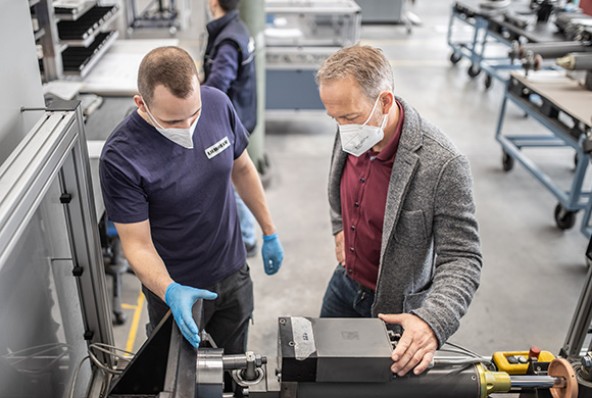
Quality comes first
To develop these comprehensive solutions, Paul and his team are working closely together with their colleagues at Liebherr Aerospace in Lindenberg (Germany) and they are constantly exchanging technology insights with other Liebherr development centres from the construction machinery sector. “It takes a team effort to achieve technological advances today,” says Paul. “At Liebherr, we pool all of our experience and technical expertise from the transport systems, aerospace and construction machinery sector. This enables us to develop innovative products that meet the specific needs of each of our customers.”
Paul firmly believes that the key to success lies in the quality of technically sophisticated products. That is why he and his team in Korneuburg focus on testing, monitoring, verification and continual improvement to guide them at each stage of the product cycle, from prototyping, to product qualification, to serial production. As an engineer and product manager, Paul takes some inspiration from legendary football trainer Dettmar Cramer, who once rallied his team before an international title match by telling them, “As long as better is possible, good isn’t good enough.” Patrick Berger could not have put it better himself.


